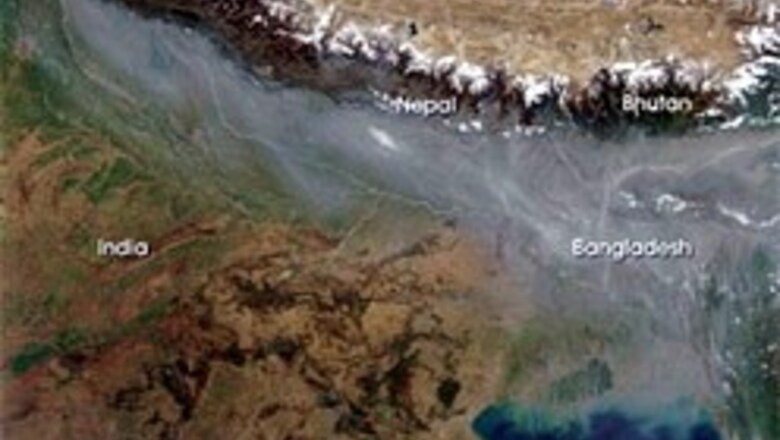
views
Washington: Pollution has stifled growth in India's rice harvest, cheating the staple crop of the rain and cool nighttime temperatures needed to flourish, US researchers reported on Monday.
Since the mid-1980s, the stubborn brown cloud of pollution that shrouds much of India, coupled with increased concentrations of greenhouse gases, together have limited both the yields and extent of rice farms in the nine Indian states that account for most of the country's wet-season harvest, University of California researchers report in a new study.
Had both forms of pollution been cut, India's rice harvest across those states would have increased more than 14 percent between 1985 and 1998, they report. That could have helped restore the rate of growth to that seen in the 1960s and '70s, in the immediate wake of the ''Green Revolution'' that allowed India to become self sufficient in rice production.
The researchers pin at least part of the blame on two pollution-linked phenomena, though they acknowledge they only augment other explanations for the stagnating growth in rice output. Those include a fall in prices, soil exhaustion and deteriorating irrigation infrastructure.
''We are no way arguing atmospheric brown clouds and greenhouse gases are the only reason for this slowdown, but it's an explanation not suggested previously and contributes to the slowdown,'' said director of environmental research at the University of California Institute on Global Conflict and Cooperation and study co-author Jeffrey Vincent.
Details appeared on Monday in the Proceedings of the National Academy of Sciences.
PAGE_BREAK
An outside expert called it ''one of the clearest demonstrations I have seen of the negative impact of pollution and its climate effects on crop yields.''
''It's not about how climate impacts us in the future, it's about consequences of changes we have already seen, starting in the 1960s,'' said director of the department of global ecology at the Carnegie Institution at Stanford University, Chris Field, who was not connected with the research.
One of the world's largest clouds of pollution, formed from soot from fires, factories and tailpipes, wafts over much of India. That cloud cuts the amount of sunlight hitting the Earth and in turn reduces rainfall amounts, in part since its dimming effect dents the amount of water evaporated from the sea.
The shading cloud also has a cooling effect, though. Previous studies have suggested that effect can offset the warming caused by increased amounts of greenhouses gases in the atmosphere, where they trap heat.
Instead, the researchers found by combining historical Indian rice harvest data and a climate model that the phenomena act in concert to curtail rice production. Yes, the clouds can cool the Earth, but only during the day; at night, greenhouse gases keep temperatures higher than they would have been otherwise, they said. Those higher nighttime temperatures stress and restrict the growth of rice.
Because of that, the researchers found that cutting both the clouds of pollution and greenhouse gas levels would benefit rice harvests.
''There's still room for increases in rice output in India,'' Vincent said.

















Comments
0 comment